How to Harness the Power of Tapping While You Sleep
Struggling with a health condition? Getting distracted easily? Feeling a lack of confidence? If you are experiencing anything along those lines, then you may be feeling stuck and having trouble breaking out of old patterns.
If that sounds like you, then don’t worry. It is possible to get unstuck and create positive change!
Whether you are looking to sleep better, increase healing, boost productivity, find more confidence, or feel more optimistic, then you may want to give our Sleep Programming Tapping Meditations a try.
Sleep Programming is a powerful approach to help you bring about positive changes in your life, move towards the outcomes you want, and reach your goals.
So, let’s take a closer look at what it is, how it works, and why this technique can be so effective in helping people experience positive change.
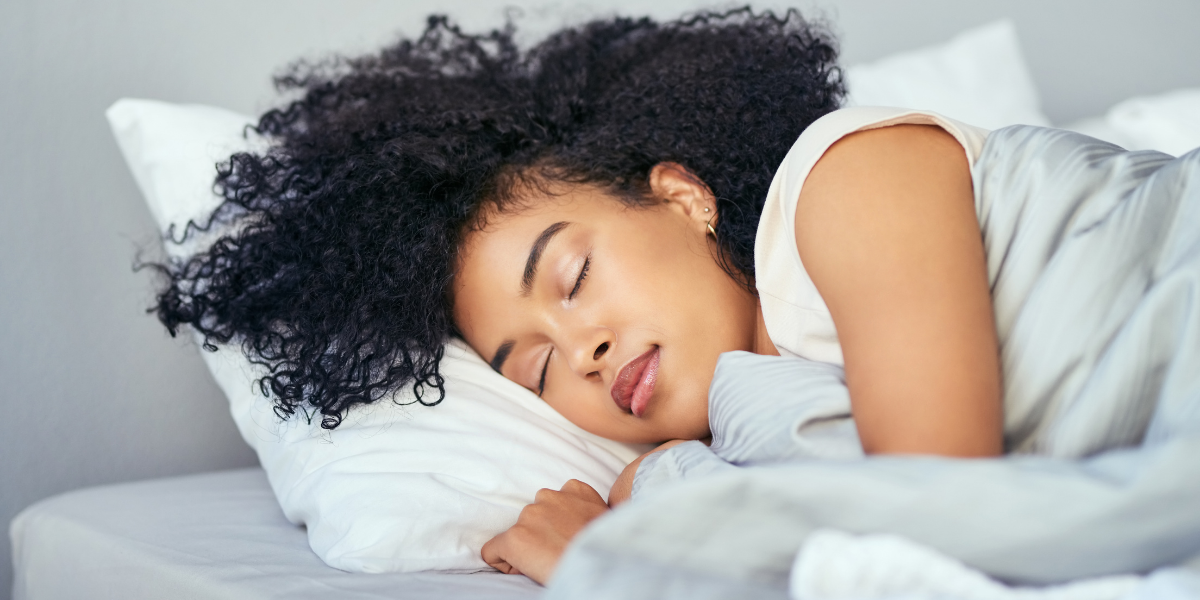
What is Sleep Programming?
Sleep Programming Meditations combine the power of Tapping with positive suggestions, helping you to create new patterns and program your body & mind for the better.
Depending on the topic that is targeted in the specific meditation you choose, you may want help to program your mind to support goals like improved health, increased confidence, or deeper sleep, for example.
Our Sleep Programming Tapping Meditations are designed to help you first calm down and get into a highly relaxed state using the power of Tapping. And then from that state of calm, you are led through positive suggestions and visualizations to support whatever the target objective may be for the meditation.
This approach draws on the concept of hypnosis as well as other techniques like positive affirmations, guided imagery, and visualization.
Research shows that when we bring our minds into a highly relaxed and focused state, we are better able to listen and respond to suggestions. This is commonly experienced in hypnosis, an experience that allows people to guide their subconscious to healthy habits, reframe thoughts and beliefs, gain more sense of control, and build positive expectations.[1-3]
In our Sleep Programming Meditations, you are guided into a state of relaxation, calm, and focus similar to hypnosis, but using the technique of Tapping instead. From that open state, you can help guide your mind to repattern and program towards positive outcomes.
These Tapping Meditations are powerful. Not only do they help you get into deep relaxation right before bed, but they also help to prime your brain to bring about the results in your life that you deeply want. These meditations can influence your thoughts, emotions, and behaviors, and how you experience your daily life.
Let’s take a closer look at the two main parts of a Sleep Programming Meditation: getting deeply relaxed and tuning into positive suggestions & visualizations.
Step 1: Tapping Into Relaxation
Sleep Programming begins with turning town the stress response and getting deeply relaxed. In the first rounds of Tapping in these meditations, you’ll be guided to tap through the points and release stress, let go of tension in your body, and quiet your thoughts.
We know that Tapping is an extremely effective tool for bringing a deep sense of calm to both the brain and body. In fact, Tapping can actually help you to turn off the stress response and even reduce levels of stress hormones like cortisol.[4] When you tap on the meridian points as part of the basic Tapping technique, it sends calming signals to the brain that lets it know it is safe to relax.
Inducing the relaxation response with Tapping in a Sleep Programming Meditation does two important things.
First, it helps your brain and body slow down and prepare for sleep. The calmer your mind is and the more relaxed your body is, the easier it will be for you to drift off to sleep. So, using Tapping right before bed can help you to fall asleep faster and sleep more deeply.
Second, triggering relaxation through Tapping helps to bring your brain into a highly relaxed, yet focused state. And from that state, the mind is better able to open up to positive changes, new ways of thinking, healing, behavior change, and more.
Step 2: Adding In Positive Statements, Affirmations, and Visualizations
After helping you to get relaxed and open your mind, the second phase of Sleep Programming is to introduce positive suggestions, affirmations, and visualizations in support of your goals.
It can be very advantageous to give yourself something positive to focus on before you drift off to sleep, because the brain is more receptive to positive suggestions when it is highly relaxed and focused.[1-3]
In the Tapping Solution App, we have numerous Sleep Programming Meditations on a variety of topics from increasing motivation and productivity to getting stronger, making healthy eating choices, balancing hormones, and increasing confidence at work. For each topic, the meditation will guide you through positive statements aligned with your objective. In addition, it will help you imagine yourself experiencing the effects and visualize the results you want.
Suggestions, positive statements, and visualizations have the ability to influence your mood, your thoughts, your perceptions, and ultimately your actions.[5] They are designed to help you repattern and program your mind to shift away from unhelpful patterns and move towards whatever goal you might have – whether that is deeper sleep, increased optimism, support in making healthy choices, or something else.

Sleep Programming Is an Approach Grounded In Evidence-Based Techniques
As mentioned earlier, Sleep Programming draws on the principles of hypnosis as well as other techniques like positive affirmations, guided imagery, and visualization. These approaches are well-documented in the scientific literature to help people create positive changes and feel better.
For example, let’s take a look at hypnosis. Researchers have seen time and time again that suggestions in a hypnotic state can actually influence brain networks, along with both our physical and mental experience.[1]
Suggestions under hypnosis can help people to reframe thinking and beliefs, build positive expectations, increase feelings of control and empowerment, and more.[1] In essence, they can help people to reprogram the brain and experience positive outcomes.
Some of the evidence-based benefits of hypnosis include helping people to:
- Improve sleep quality and duration
- Reduce stress and anxiety
- Improve self-confidence and self-esteem
- Manage stress-related health conditions
- Reduce pain
- Relieve depression
- Lose weight
- Quit smoking
- Find relief from conditions like IBS, PTSD, and chronic pain
- Cope better with chronic conditions
- Enhance the effectiveness of other treatments like cognitive behavioral therapy [1,3,6-13]
Research also tells us that when we combine the power of relaxation with the power of hypnotic suggestions, we can have even greater results.[6] And that is exactly what we aim to do in the Sleep Programming Tapping Meditations.
Sleep Programming Meditations also include positive affirmations. Positive affirmations are known to help people increase self-worth, restore confidence, gain perspective, and focus less on the negative. They have also been shown to increase certain areas of neural activity in the brain.[14,15]
By repeating phrases such as “I am enough,” “I am healing deeply,” or “I am capable” in a Sleep Programming Meditation, you can help to create new patterns of thinking and beliefs that are more helpful and productive for you.
Along with hypnosis-like techniques and positive affirmations, you’ll also find visualization and guided imagery in Sleep Programming Meditations. These techniques are designed to help you truly embody the positive outcomes that you are moving towards.
Guided imagery is known to be effective in bringing about many positive changes in people’s lives. Research suggests visualization can help people reduce pain, find relief from anxiety, cope with stress, improve athletic performance, and ease pre-test anxiety – to name just a few of the researched benefits.[16-19]
Researchers believe that when we experience something in our mind (as in a hypnotic state or visualization), it activates the same patterns of the brain as when we have the experience in real life.[20] This suggests that even if we are just lying in our beds with our eyes closed, listening to a meditation script, and visualizing a positive outcome, we can help to reinforce neural circuits that are aligned with our goals.
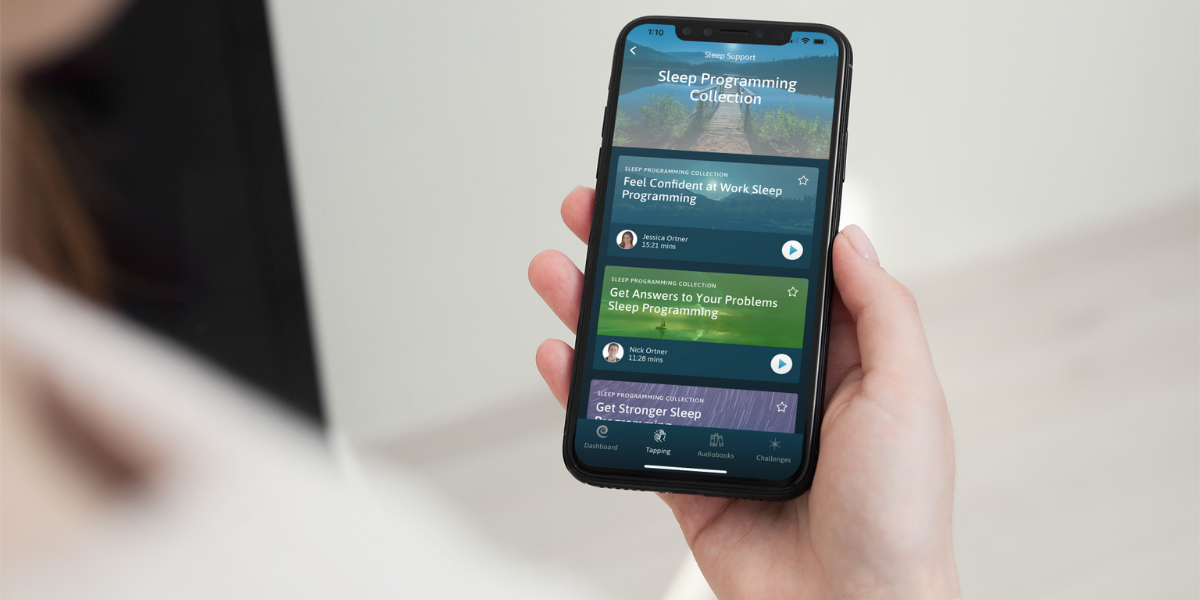
Give Sleep Programming a Try for Yourself In the Tapping Solution App
As you can see, Sleep Programming combines the best parts of a variety of different effective techniques to open up the mind and body to positive changes.
Getting deeply relaxed, preparing your body for sleep, and then programming with a specific objective in mind using positive suggestions, affirmations, and visualizations is a potent combination. And it’s that potent combination that makes Sleep Programming Tapping Meditations so special and so helpful for a wide variety of needs.
I’ve experienced the positive influence of Sleep Programming myself in my personal life, I’ve seen it be transformational for others I’ve worked with, and I’ve heard positive feedback about this technique time and time again from users in the Tapping Solution App.
So why not give it a try and see what you think?
If you are looking to use Sleep Programming specifically to get deeper or more restorative sleep, here are a few meditations you might like:
- Sleep Through the Night Sleep Programming
- Wake Up Refreshed Sleep Programming
- Reduce Night-Time Wake-Ups Sleep Programming
If you are looking for support in other areas of your life, such as your health, self-confidence, stress, or motivation, consider other topics in our Sleep Programming category. Here are just a few to choose from:
- I Am Enough Sleep Programming
- Increase my Optimism Sleep Programming
- Make Healthy Eating Choices Sleep Programming
- Get Stronger Sleep Programming
- Be Calm in Social Situations Sleep Programming
- Feeling Confident at Work Sleep Programming
- Navigate Change with Ease Sleep Programming
- Jaw Relaxation Sleep Programming
- Increase Motivation & Productivity Sleep Programming
- Release Colds and Flus Sleep Programming
We’ve also created 3 Sleep Programming Challenges in the App that will help you create positive changes in your life and mindset.
You can experience all of these Tapping Challenges, as well as the entire library of Tapping Meditations in the App, with a 2-week free trial.
5 Day Sleep Programming for Positivity
Increase My Optimism
I Am Enough
Increase Abundance & Prosperity
Increase Self-Esteem
Wake Up Happy
5 Day Sleep Programming for Productivity
Increase Motivation and Productivity
Increase Self-Discipline
Improve Brain Function
Get Answers to Your Problems
Increase Self-Confidence
7 Day Sleep Programming for Health
Sleep Through the Night
Increase Healing
Make Healthy Eating Choices
Balanced Hormones
Jaw Relaxation
Get Stronger
Wake Up Refreshed
Until next time…
Keep Tapping!
Nick Ortner
P.S. Here are just a few of many testimonials we’re received about the meditations in the Sleep Programming Challenges…
“A miracle happened as a result of this meditation! I can now look in the mirror and not feel disgusted and hatred for my body! I can now see my body through eyes of love and compassion! Huge accomplishment for me considering I have hated my body for decades! Thank you for creating this amazing meditation!”
“This is an awesome tapping session. I’m glad I discovered it. Thank you! it was so good to find something both relaxing and designed to enhance getting answers via intuition. I have felt stuck about something for a long time, and know the answers are within.”
“I found this tapping so relaxing and positive, easy to visualize the healing and sleep”
Have you used a Sleep Programming Tapping Meditation? How did it work for you? Comment below!
References
- Sawni A, Breuner CC. Clinical Hypnosis, an Effective Mind-Body Modality for Adolescents with Behavioral and Physical Complaints. Children (Basel). 2017;4(4):19. Published 2017 Mar 24. doi:10.3390/children4040019.
- Smith BL. “Hypnosis today.” American Psychological Association. Apa.org. https://www.apa.org/monitor/2011/01/hypnosis
- “6 Surprising Health Benefits of Hypnosis.” Penn Medicine. Pennmedicine.org. https://www.pennmedicine.org/updates/blogs/health-and-wellness/2019/january/hypnosis
- Church D, Yount G, Brooks AJ. The effect of emotional freedom techniques on stress biochemistry: a randomized controlled trial. J Nerv Ment Dis. 2012;200(10):891-896. doi:10.1097/NMD.0b013e31826b9fc1..
- Halligan PW & Oakley DA. (2014). Hypnosis and beyond: Exploring the broader domain of suggestion. Psychology of Consciousness: Theory, Research, and Practice, 2014;1(2):105–122. https://doi.org/10.1037/cns0000019.
- Olendzki N, Elkins GR, Slonena E, Hung J, Rhodes JR. Mindful Hypnotherapy to Reduce Stress and Increase Mindfulness: A Randomized Controlled Pilot Study. Int J Clin Exp Hypn. 2020;68(2):151-166. doi:10.1080/00207144.2020.1722028.
- Otte JL, Carpenter JS, Roberts L, Elkins GR. Self-Hypnosis for Sleep Disturbances in Menopausal Women. J Womens Health (Larchmt). 2020;29(3):461-463. doi:10.1089/jwh.2020.8327.
- Hammond DC. Hypnosis in the treatment of anxiety- and stress-related disorders. Expert Rev Neurother. 2010;10(2):263-273. doi:10.1586/ern.09.140.
- Roberts RL, Rhodes JR, Elkins GR. Effect of Hypnosis on Anxiety: Results from a Randomized Controlled Trial with Women in Postmenopause [published online ahead of print, 2021 Aug 17]. J Clin Psychol Med Settings. 2021;10.1007/s10880-021-09810-3. doi:10.1007/s10880-021-09810-3.
- Jensen MP, Jamieson GA, Lutz A, et al. New directions in hypnosis research: strategies for advancing the cognitive and clinical neuroscience of hypnosis. Neurosci Conscious. 2017;3(1):nix004. doi:10.1093/nc/nix004.
- Jensen MP, Adachi T, Tomé-Pires C, Lee J, Osman ZJ, Miró J. Mechanisms of hypnosis: toward the development of a biopsychosocial model [published correction appears in Int J Clin Exp Hypn. 2015;63(2):247]. Int J Clin Exp Hypn. 2015;63(1):34-75. doi:10.1080/00207144.2014.961875.
- Ilmi J, Suharsono YY, Ingarianti TTM. Self-Hypnosis Training to Improve Self Confidence in Students for Public Speaking. Proceedings of the 3rd International Conference on Education and Training (ICET 2017). 2017. https://doi.org/10.2991/icet-17.2017.23.
- Grégoire C, Faymonville ME, Vanhaudenhuyse A, Jerusalem G, Willems S, Bragard I. Randomized controlled trial of a group intervention combining self-hypnosis and self-care: secondary results on self-esteem, emotional distress and regulation, and mindfulness in post-treatment cancer patients. Qual Life Res. 2021;30(2):425-436. doi:10.1007/s11136-020-02655-7.
- Critcher CR, Dunning D. Self-affirmations provide a broader perspective on self-threat. Pers Soc Psychol Bull. 2015;41(1):3-18. doi:10.1177/0146167214554956.
- Cascio CN, O’Donnell MB, Tinney FJ, et al. Self-affirmation activates brain systems associated with self-related processing and reward and is reinforced by future orientation. Soc Cogn Affect Neurosci. 2016;11(4):621-629. doi:10.1093/scan/nsv136.
- Patricolo GE, LaVoie A, Slavin B, Richards NL, Jagow D, Armstrong K. Beneficial Effects of Guided Imagery or Clinical Massage on the Status of Patients in a Progressive Care Unit. Crit Care Nurse. 2017;37(1):62-69. doi:10.4037/ccn2017282.
- Grammatica G. Guided Imagery as a Resource to Decrease Test Anxiety. Creat Nurs. 2018;24(4):211-214. doi:10.1891/1078-4535.24.4.211.
- Carpenter JJ, Hines SH, Lan VM. Guided Imagery for Pain Management in Postoperative Orthopedic Patients: An Integrative Literature Review. J Holist Nurs. 2017;35(4):342-351. doi:10.1177/0898010116675462.
- Giacobbi PR Jr, Stewart J, Chaffee K, Jaeschke AM, Stabler M, Kelley GA. A Scoping Review of Health Outcomes Examined in Randomized Controlled Trials Using Guided Imagery. Prog Prev Med (N Y). 2017;2(7):e0010. doi:10.1097/pp9.0000000000000010.
- Williamson A. What is hypnosis and how might it work?. Palliat Care. 2019;12:1178224219826581. Published 2019 Jan 31. doi:10.1177/1178224219826581.


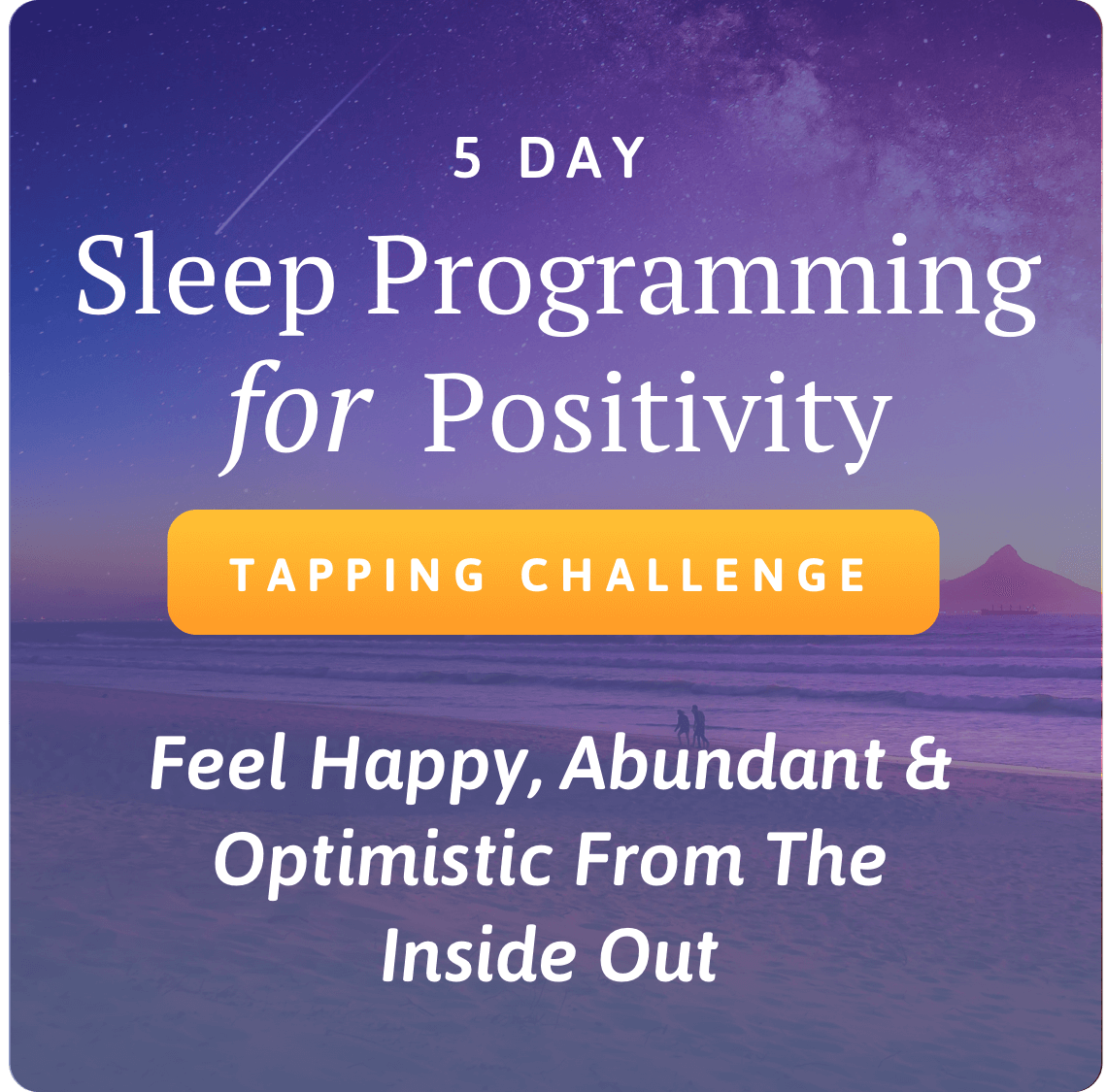
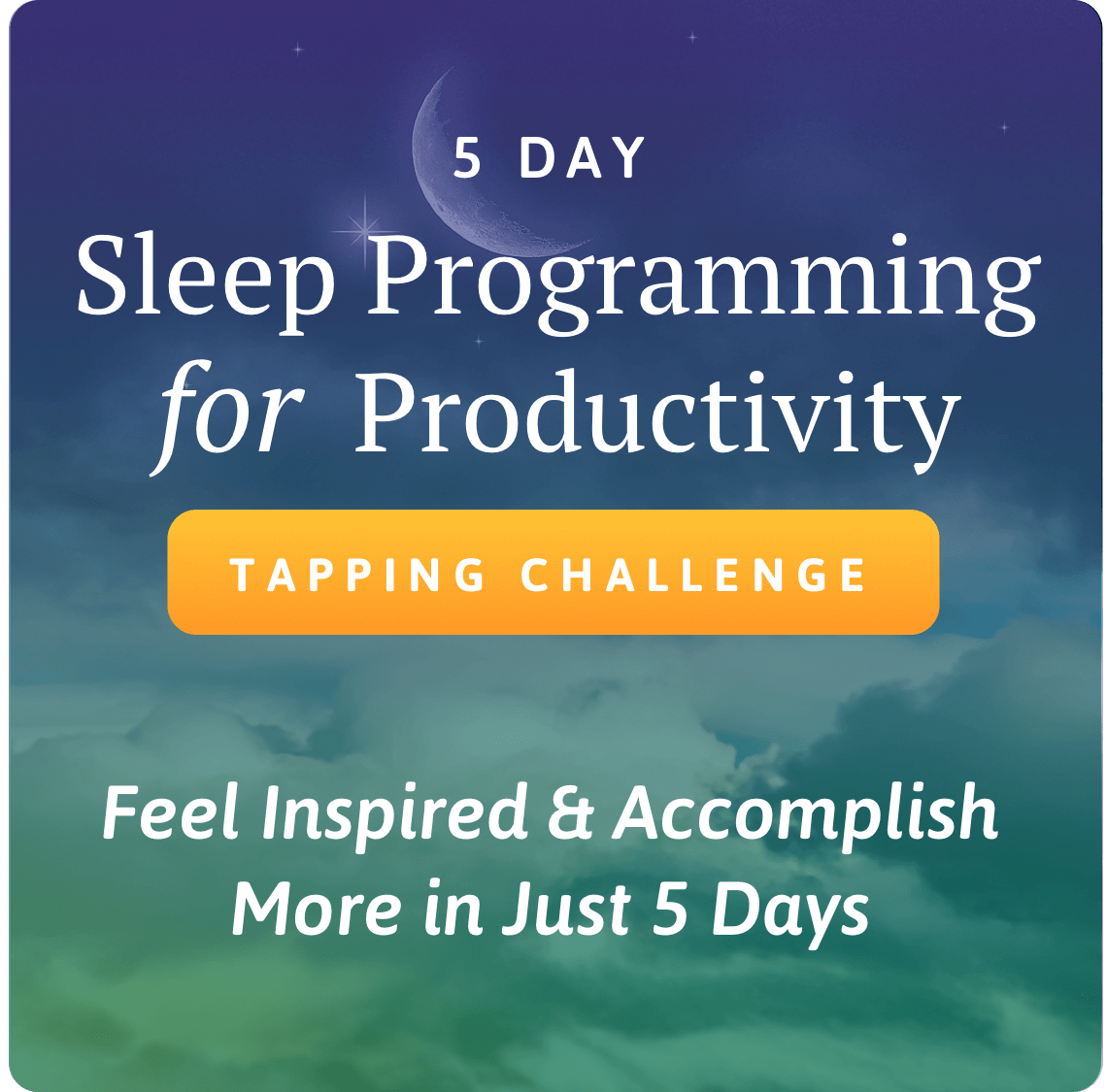
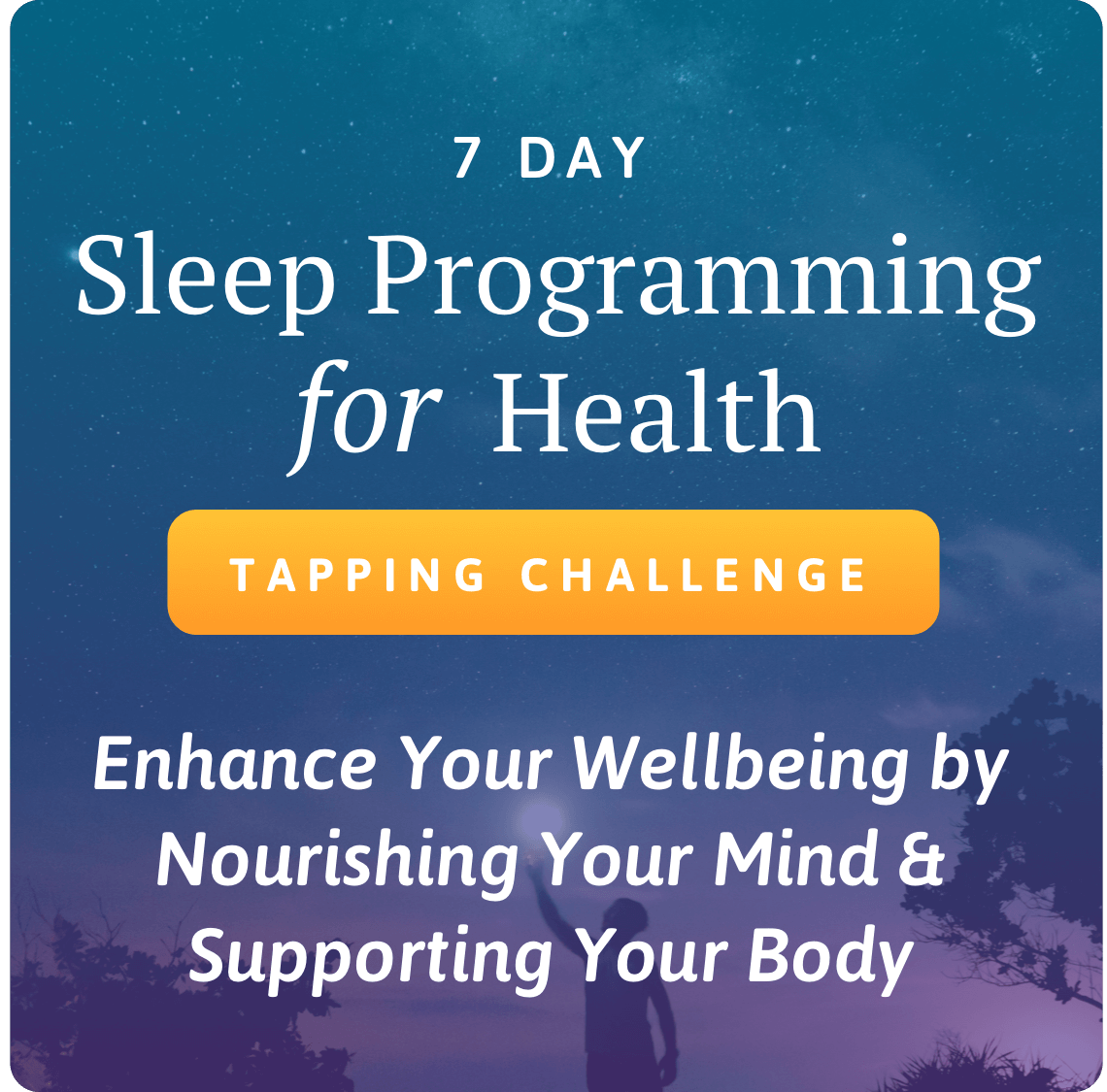
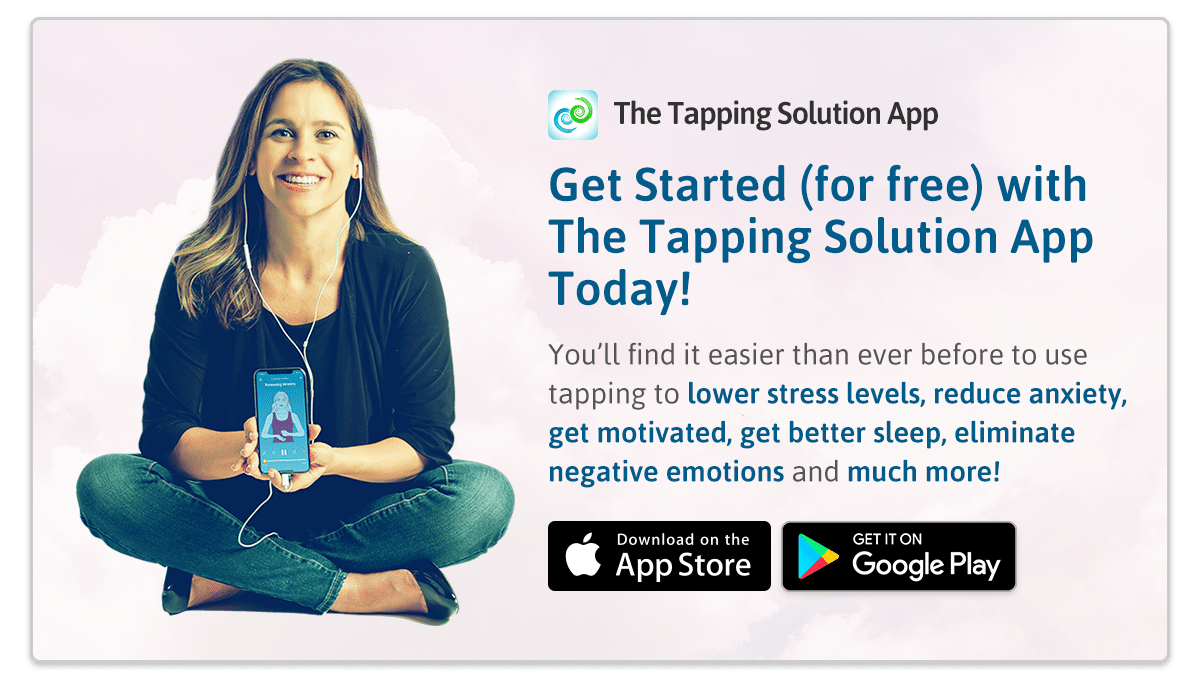









Connect With Us on Social Media